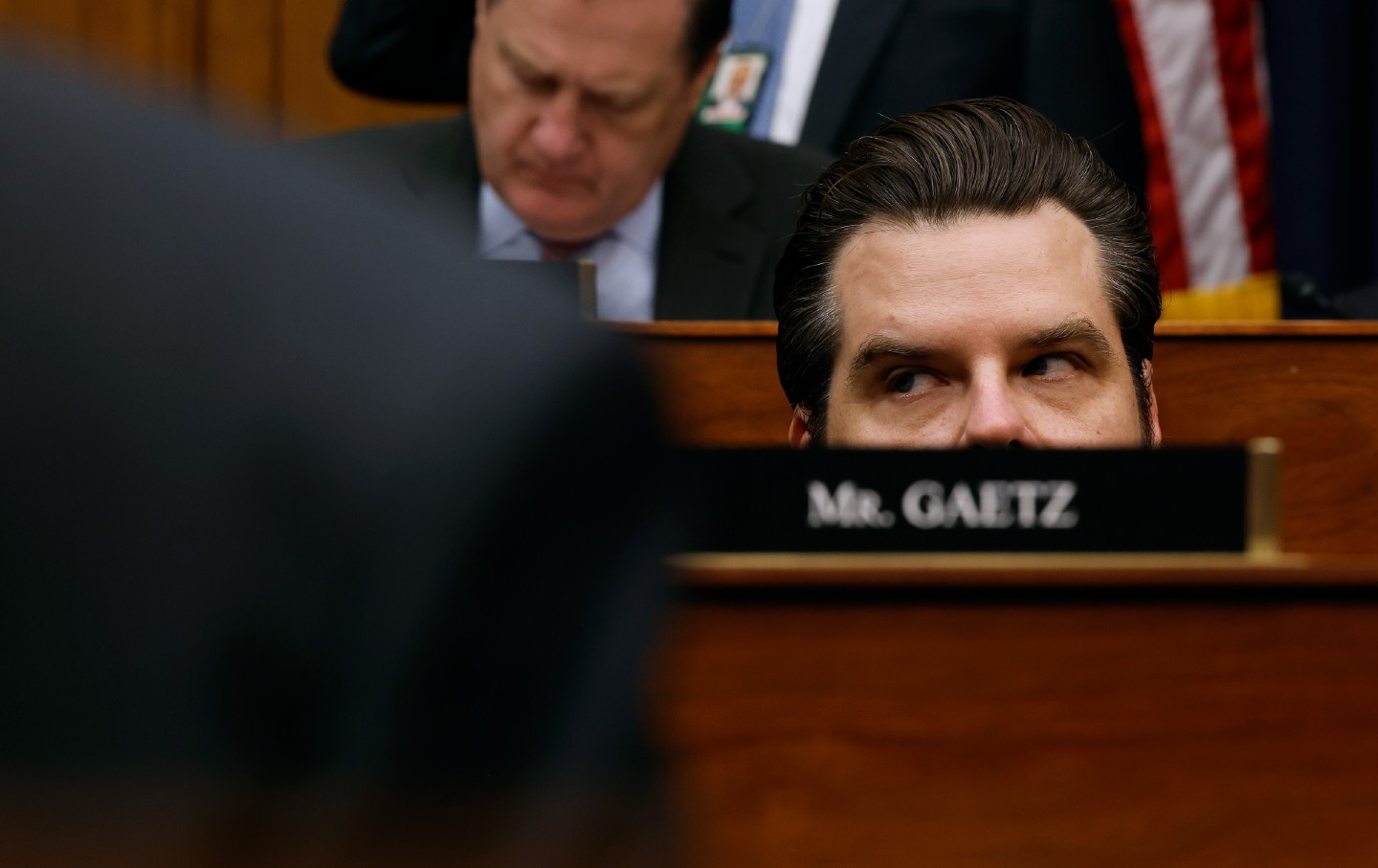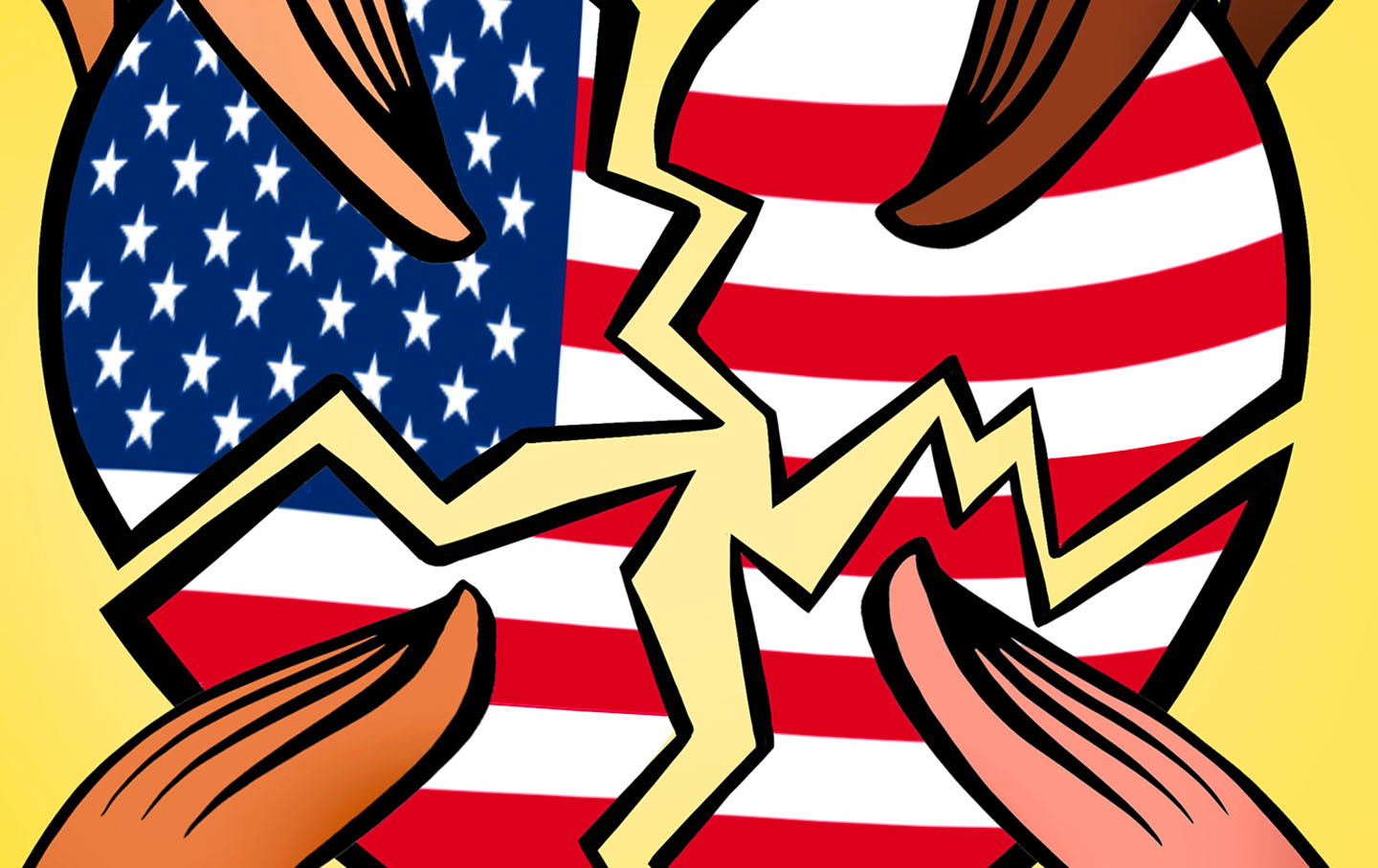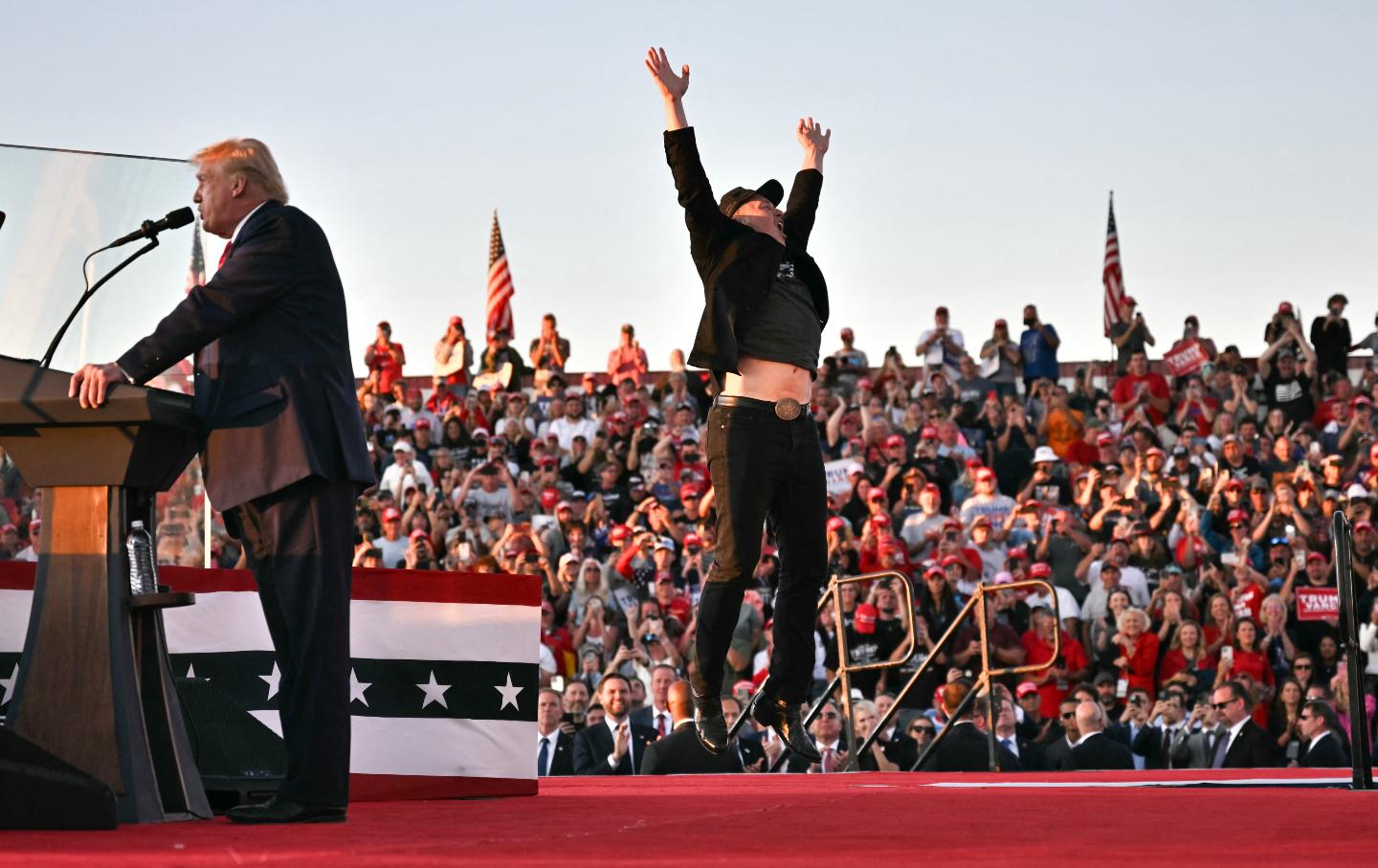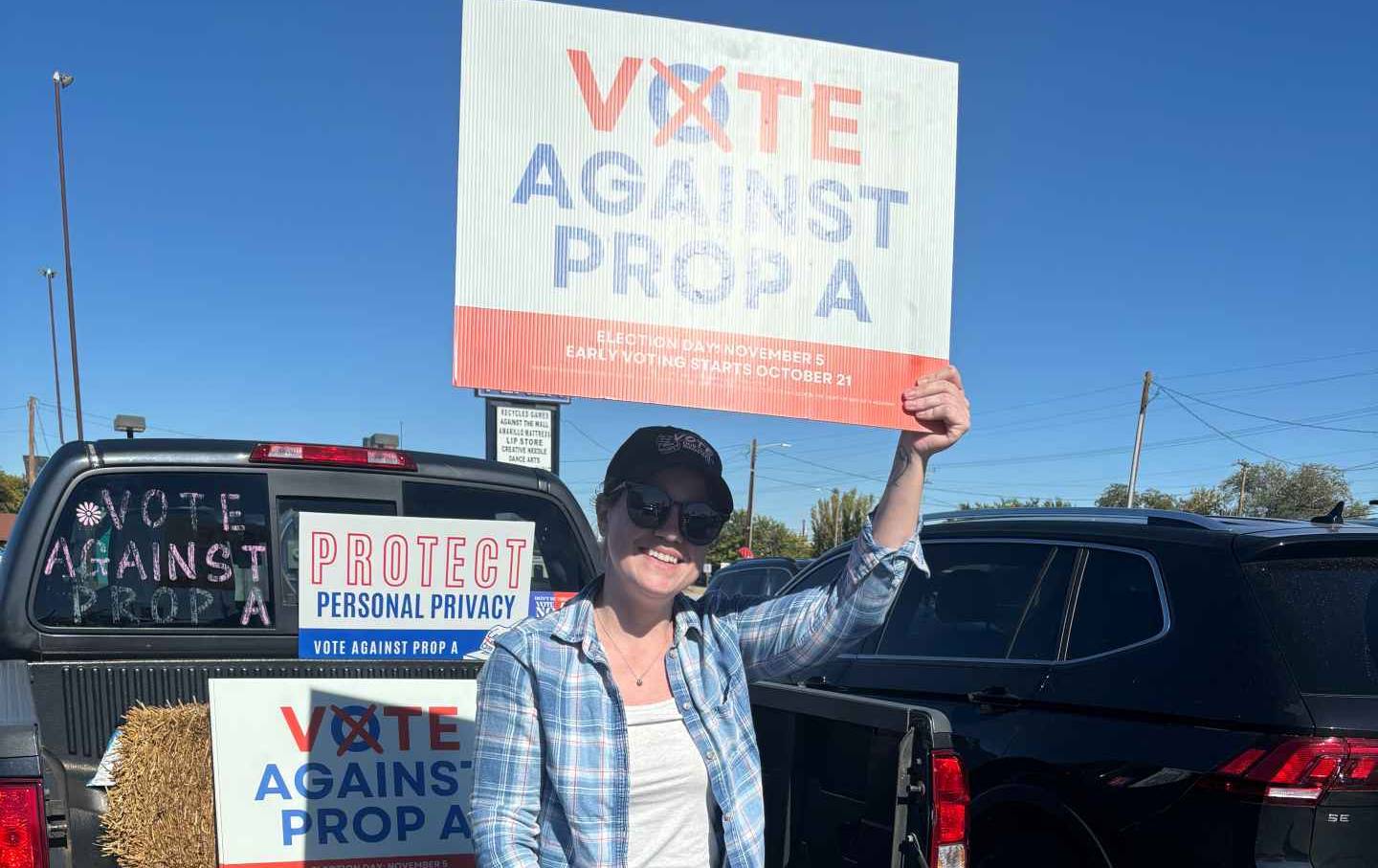
Donald Trump Is Waging a Shock-and-Awe War Against His Own Senate Donald Trump Is Waging a Shock-and-Awe War Against His Own Senate
By nominating Matt Gaetz and other dangerous cronies, the president-elect is testing congressional servility.
Nov 14, 2024 / Jeet Heer

Broken America Broken America
We can fix it, if we work together.
Nov 14, 2024 / OppArt / Andrea Arroyo

Welcome to the Department of Government Idiocy Welcome to the Department of Government Idiocy
Trump’s new Department of Government Efficiency or “DOGE” will comprise of two clueless tech bros. What targets, exactly, will Musk and Ramaswamy try to hit?
Nov 14, 2024 / Chris Lehmann

Resisting Mass Deportation Under Donald Trump Resisting Mass Deportation Under Donald Trump
Here in Chicago, we’ve developed effective, grassroots strategies for defending our immigrant communities.
Nov 14, 2024 / Anthony J. Quezada and Carlos Ramirez-Rosa

What We Learn From the Texas Town That Voted for Abortion and for Trump What We Learn From the Texas Town That Voted for Abortion and for Trump
The right to abortion won big this election—and so did the man who ended Roe v. Wade. Nowhere was that contradiction more pronounced than in Amarillo, Texas.
Nov 14, 2024 / Amy Littlefield

What’s Next for the Rural Americans Who Oppose Trump? What’s Next for the Rural Americans Who Oppose Trump?
In rural communities, 70 percent of elections are uncontested. With Trump winning a second term, it’s never been more urgent to build power at the local and state level.
Nov 14, 2024 / Chloe Maxmin and Canyon Woodward

Is It Possible to Suspend Disbelief at Ayad Akhtar’s AI Play? Is It Possible to Suspend Disbelief at Ayad Akhtar’s AI Play?
The Robert Downey Jr.–starring McNeal, which was possibly cowritten with the help of AI, is a showcase for the new technology’s mediocrity.
Nov 14, 2024 / Books & the Arts / Rhoda Feng

Congress Must Reject a Bill That Would Give Trump New Power to Silence Critics Congress Must Reject a Bill That Would Give Trump New Power to Silence Critics
How a new House bill could chill dissent from nonprofits.
Nov 13, 2024 / Kia Hamadanchy


